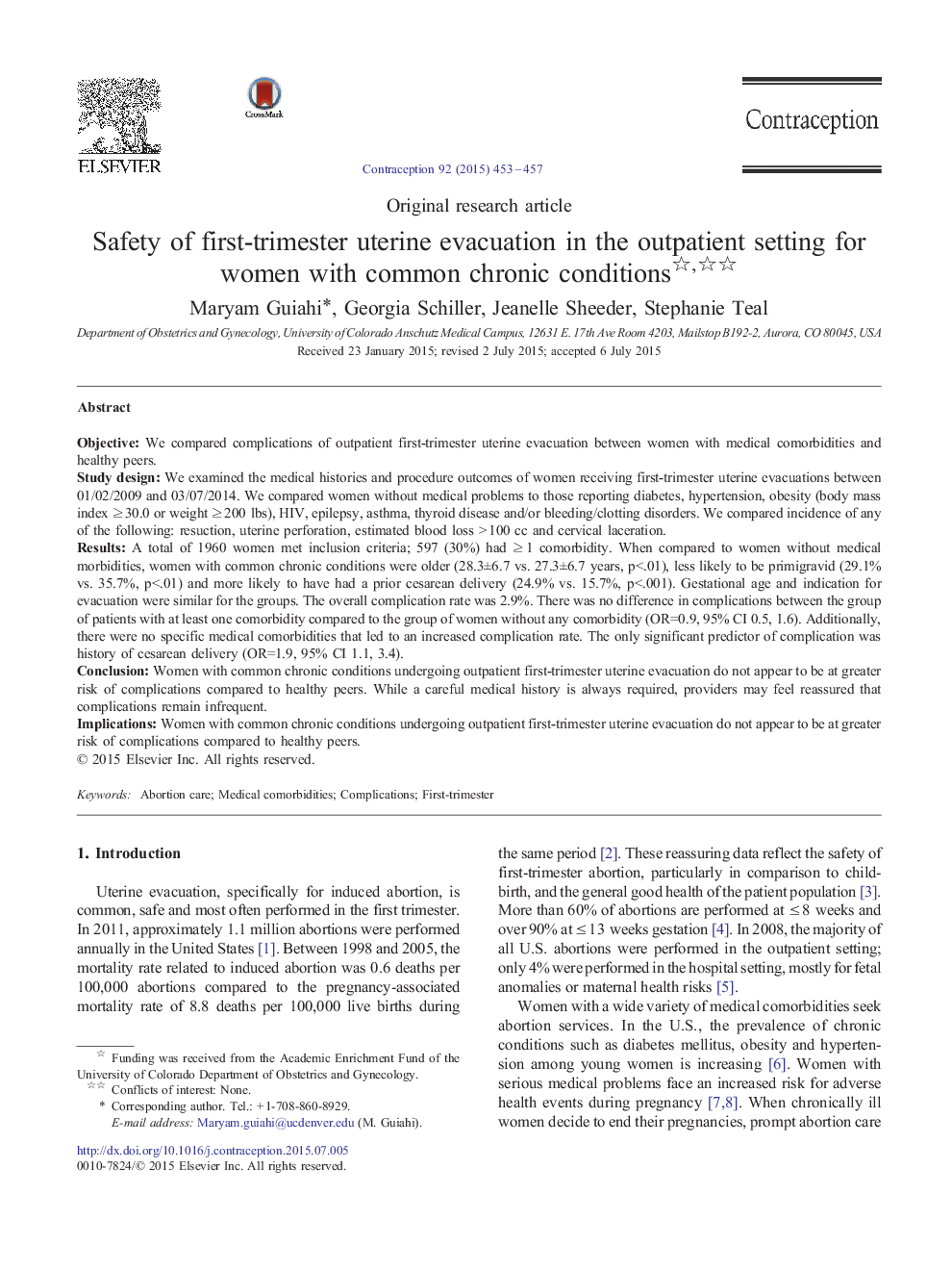| Article ID | Journal | Published Year | Pages | File Type |
|---|---|---|---|---|
| 3913089 | Contraception | 2015 | 5 Pages |
ObjectiveWe compared complications of outpatient first-trimester uterine evacuation between women with medical comorbidities and healthy peers.Study designWe examined the medical histories and procedure outcomes of women receiving first-trimester uterine evacuations between 01/02/2009 and 03/07/2014. We compared women without medical problems to those reporting diabetes, hypertension, obesity (body mass index ≥ 30.0 or weight ≥ 200 lbs), HIV, epilepsy, asthma, thyroid disease and/or bleeding/clotting disorders. We compared incidence of any of the following: resuction, uterine perforation, estimated blood loss > 100 cc and cervical laceration.ResultsA total of 1960 women met inclusion criteria; 597 (30%) had ≥ 1 comorbidity. When compared to women without medical morbidities, women with common chronic conditions were older (28.3±6.7 vs. 27.3±6.7 years, p<.01), less likely to be primigravid (29.1% vs. 35.7%, p<.01) and more likely to have had a prior cesarean delivery (24.9% vs. 15.7%, p<.001). Gestational age and indication for evacuation were similar for the groups. The overall complication rate was 2.9%. There was no difference in complications between the group of patients with at least one comorbidity compared to the group of women without any comorbidity (OR=0.9, 95% CI 0.5, 1.6). Additionally, there were no specific medical comorbidities that led to an increased complication rate. The only significant predictor of complication was history of cesarean delivery (OR=1.9, 95% CI 1.1, 3.4).ConclusionWomen with common chronic conditions undergoing outpatient first-trimester uterine evacuation do not appear to be at greater risk of complications compared to healthy peers. While a careful medical history is always required, providers may feel reassured that complications remain infrequent.ImplicationsWomen with common chronic conditions undergoing outpatient first-trimester uterine evacuation do not appear to be at greater risk of complications compared to healthy peers.
